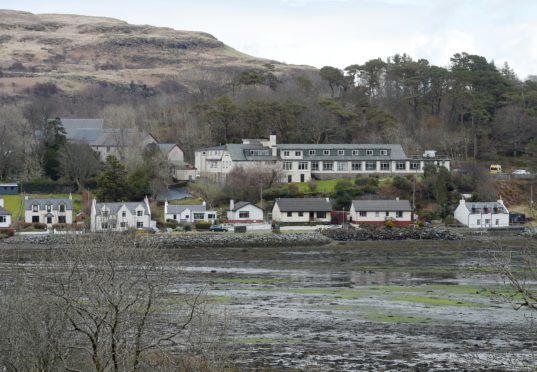NHS Highland’s controversial “redesign” of Skye’s health services would make the island’s hospital bed to population ratio comparable to developing nations in Central Africa, it has been claimed.
Skye councillor and renowned economist Ronald MacDonald says the 24 inpatient beds in Broadford’s proposed new health and social care “hub” for Skye, Lochalsh and South-West Ross-shire would mean just 1.7 beds per 1,000 inhabitants in an area of 14,500 residents.
Mr MacDonald is especially aggrieved that this bed ratio would be much smaller than the 5.1 beds per 1,000 inhabitants – 107 inpatient beds for 21,000 people – on the Isle of Lewis, which he describes as having a “similar rural and urban mix”, with Stornoway and Portree as the main settlements.
External review into healthcare provision in Skye and Lochaber to be carried out
And he believes the situation is comparable to developing countries like Burundi in Central Africa which, according to the latest available World Health Organisation data, has a hospital bed ratio of 1.9 per 1,000 inhabitants (2011).
Other nations with similarly low bed ratios include Malawi with 1.3 per 1,000 (2011) and Bolivia with 1.1 (2012). Mexico has a bed ratio of 1.5 according to latest Organisation for Economic Co-operation and Development (OECD) figures from 2015.
Mr MacDonald said: “The figures explain a lot of the disquiet in Skye. For some reason we are being badly discriminated against.”
An NHS Highland spokesman stressed the ratio of beds is “very much influenced” by geography of the specific area chosen and that beds in Raigmore Hospital in Inverness are also used by Skye patients.
And the spokesman said a five-year analysis of data as part of the proposed redesign showed a variation of between 12 and 28 beds being required, with 24 beds considered the “optimum.”
But Mr MacDonald said this proposed optimum number fails to account for the 240-mile round trips to Inverness from Skye, or the need for beds in Portree where the population is growing at 1.2% each year. He also stressed that patients in the Western Isles, Orkney and Shetland are able to use beds on the mainland for more serious admissions.
Mr MacDonald added: “We definitely need beds in Portree. The majority of people have to go to all that inconvenience of travelling – and it’s not trivial given the nature of the roads here and given what they can be like in winter.
“At the end of the day, it’s just about saving money and wanting to cut beds in Portree to have less nurses on shift – but it’s putting the cost on to the community and this should not be the case.”
Mr MacDonald said there were previously 18 beds in the North of Skye – 12 in Portree and six in Gusto Community Hospital before it closed in 2006 – and that the numbers have been reducing over the last decade.
Officially, there are currently 20 inpatient beds at the Dr Mackinnon Memorial Hospital in the Broadford and 12 in Portree Hospital.
But a ward closed at the end of 2016 and in summer last year the hospital closed to new admissions due to staff shortages.
The inpatient beds are typically used by patients who may be recovering from major operations, or for those with serious medical conditions.
Mr MacDonald described the ongoing cuts to bed numbers as “self-defeating,” claiming he is aware of cases of patients being sent home too early from – or refused admission to – Broadford to free up beds, but who then develop further health complications which leads to them taking up acute beds in Raigmore.
However, the NHS Highland spokesman said patients can be re-admitted for all sorts of reasons and insisted it has “certainly not been” their experience that there has been a “noticeable increase in readmission of patients from Skye”.
Skye, Lochaber and Badenoch MSP Kate Forbes said: “I want to see patients in Skye, Lochalsh and Wester Ross being treated on Skye and not forced to travel to Inverness.
“Too many patients are currently referred to Raigmore for routine appointments, when they could and should be treated closer to home.
“In theory, the redesign of healthcare in Skye, Lochalsh and Wester Ross should be a fantastic opportunity to reverse the trend of sending people to Inverness by building a new hospital and creating a healthcare service that is fit for the 21st century.
“We cannot miss this opportunity by building a hospital that is too small, or failing to develop care in the community.”










